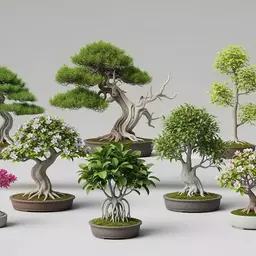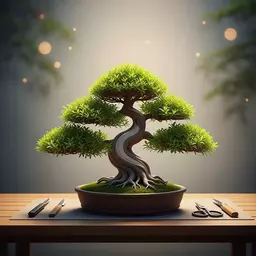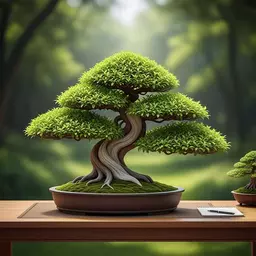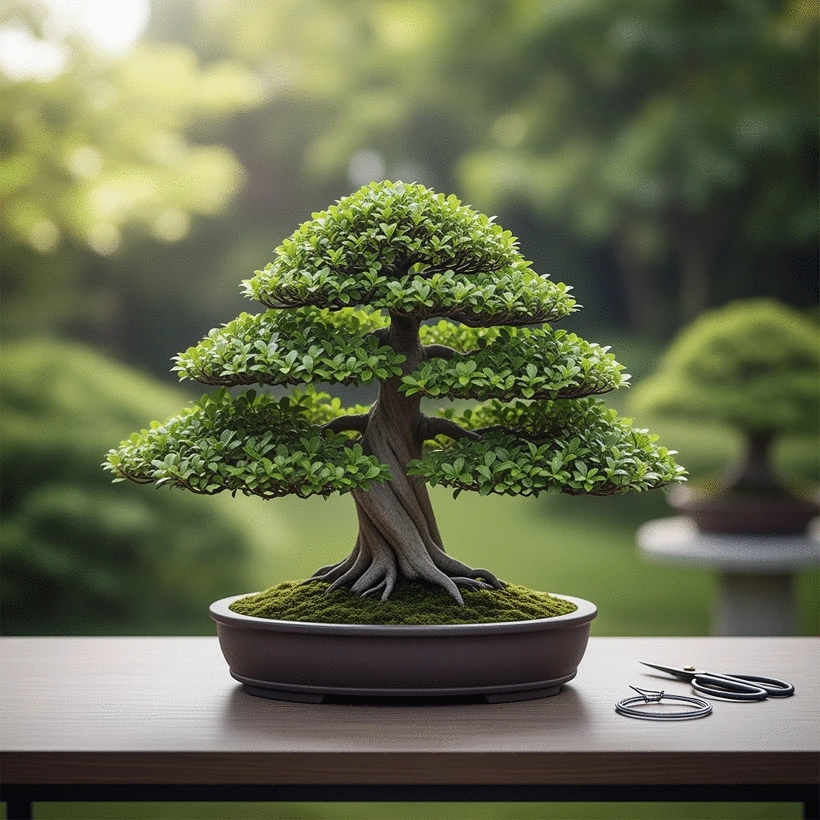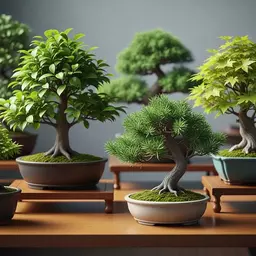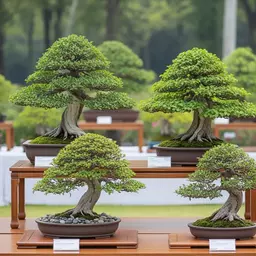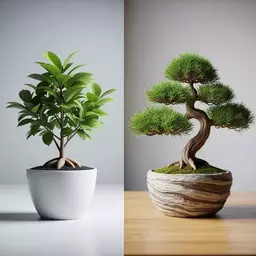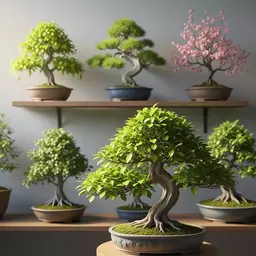Bonsai Exhibit Setup and Arrangement
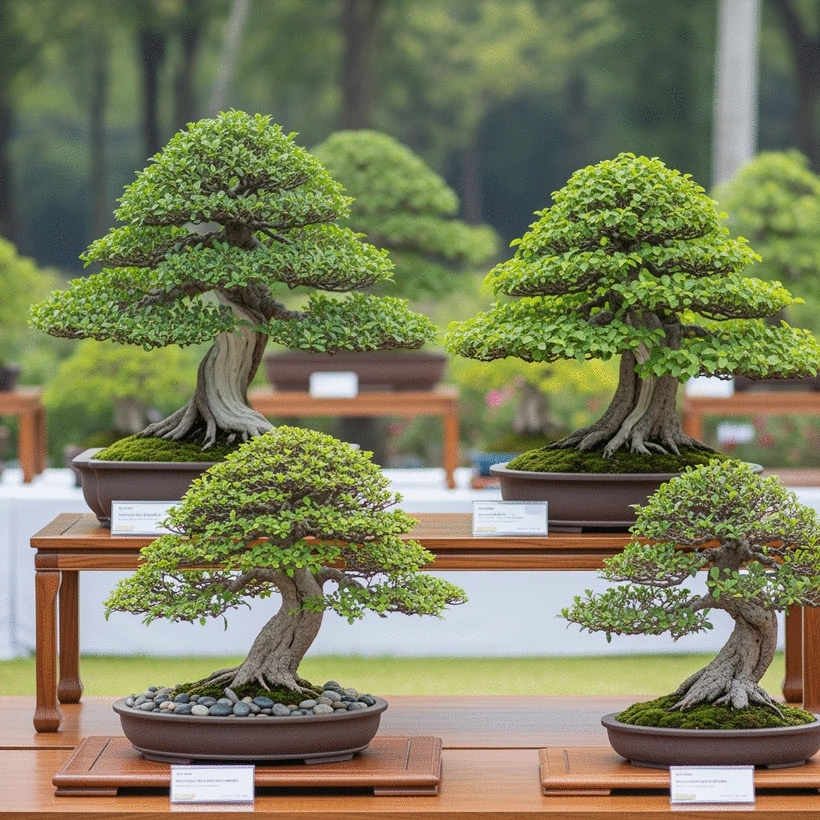
What if your bonsai exhibit could not only showcase beautiful trees but also engage and educate visitors in a captivating way? A well-designed exhibit has the power to do just that, creating an unforgettable experience for everyone involved.
What You Will Learn
- Quality Trees Matter: Ensure that the bonsai displayed are healthy and well-cared-for to leave a strong impression.
- Effective Presentation: The arrangement should highlight each tree’s unique features, enhancing visual appeal.
- Cohesive Theme: A unifying theme can add depth and interest to your exhibit, making it more engaging.
- Interactive Engagement: Incorporating educational tools and visitor interaction can lead to meaningful connections and memorable experiences.
- Understanding Judges: Familiarize yourself with judges' criteria to showcase your best work, focusing on aesthetics and craftsmanship.
- Exploring Styles: Showcase a variety of bonsai styles to captivate your audience and reflect different artistic expressions.
- Educational Elements: Include informative panels and hands-on workshops to deepen visitors' appreciation for bonsai cultivation.
- Signage is Key: Utilize clear signage to guide visitors and enhance their understanding of each bonsai on display.
Key Elements for a Successful Bonsai Exhibit
A successful bonsai exhibit goes beyond merely showcasing beautiful trees; it captivates visitors and leaves a lasting impression. Below are the core components that contribute to an engaging and impactful display, from tree quality to cultural context. For more insights on perfecting your display, check out our guide on Bonsai Display Fundamentals.
Quality & Presentation
Healthy, well-cared-for bonsai are essential. Presentation and styling should highlight each tree’s unique features.
Theme & Interaction
A cohesive theme adds depth. Engaging visitors through education and storytelling enhances their experience.
Judges & Visitors
Judges assess aesthetics and craftsmanship. Visitor interaction offers feedback and enhances memorability.
Cultural Context
Embracing Japanese traditions and global approaches provides a rich, well-rounded perspective.
Understanding Bonsai Exhibits: Key Components and Objectives
When it comes to bonsai exhibits, the beauty of these miniature trees is just the beginning. A successful exhibit does more than showcase stunning trees; it captivates visitors and leaves a lasting impression. From the careful selection of specimens to the way they are presented, every aspect plays a crucial role in creating an engaging experience for both the audience and the judges.
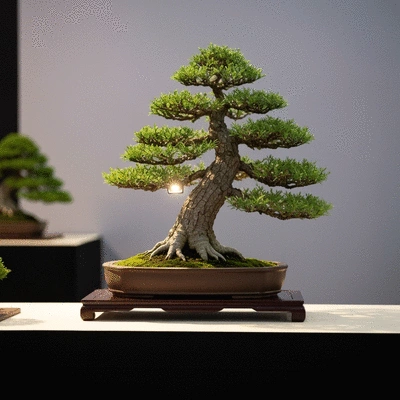
At Shire Bonsai, we believe that understanding the key components of a bonsai exhibit is essential for anyone looking to showcase their work. With my years of experience, I’ve identified several elements that contribute to a successful display. Let’s delve into what defines a successful bonsai exhibit!
What Defines a Successful Bonsai Exhibit?
A successful bonsai exhibit should be visually appealing, tell a story, and reflect the artist's dedication. Here are some essential factors to consider:
- Quality of Trees: Healthy, well-cared-for bonsai are a must!
- Presentation: The arrangement and styling should highlight each tree’s unique features.
- Theme: A cohesive theme can add depth and interest to your exhibit.
- Interaction: Engaging visitors through education and storytelling enhances their experience.
When you bring these elements together, you create an atmosphere that invites admiration and reflection. Remember, your bonsai isn’t just a plant; it’s a piece of art, and its display should convey that. For further reading on bonsai care, explore our article on How to Care for a Bonsai Tree.
Importance of Judges’ Impressions and Visitor Engagement
Judges play a vital role in determining the success of an exhibit. Their impressions can heavily influence awards and recognition. However, don't overlook the importance of visitor engagement. Engaging your audience can lead to meaningful conversations and connections. Here’s why both aspects matter:
- Judges’ Criteria: Judges assess aesthetics, health, and craftsmanship, so be sure to showcase your best work!
- Visitor Interaction: Providing educational materials and opportunities for questions can enhance their experience, making your exhibit memorable.
- Feedback: Engaging visitors allows you to gather insights and improve future exhibits.
By understanding both the judges’ perspectives and your audience's experiences, you can create a display that resonates with everyone involved!
Exploring Different Bonsai Styles for Exhibits
One of the most exciting aspects of bonsai exhibits is the diversity of styles that can be showcased. Each style has its unique characteristics and cultural significance. Here’s a brief overview of popular bonsai styles to consider for your exhibit:
- Formal Upright: A classic style that emphasizes symmetry and straight lines.
- Informal Upright: Offers a more natural look with varied trunk angles.
- Slanting: Creates dynamic movement, giving the tree a wind-swept appearance.
- Cascade: Mimics trees growing on cliffs, with branches flowing downward.
Incorporating various styles can add depth to your exhibit and highlight your versatility as a bonsai artist. Each tree tells its own story, and showcasing a range of styles can captivate your audience and judges alike!
Pro Tip
To truly elevate your bonsai exhibit, consider incorporating a storytelling element. Instead of merely displaying your trees, share the journey of each bonsai—from its initial seedling stage to its current form. This personal touch not only captivates visitors but also fosters a deeper connection between them and your art.
Frequently Asked Questions About Bonsai Exhibits
Q: What are the most important elements for a successful bonsai exhibit?
A: The most important elements include the quality and health of the trees, a thoughtful presentation that highlights each tree's unique features, a cohesive theme, and interactive engagement for visitors through education and storytelling.
Q: How do judges evaluate bonsai exhibits?
A: Judges typically assess the aesthetics, overall health, and craftsmanship of the bonsai. They look for well-styled trees, proper care, and a presentation that effectively showcases the artist's skill.
Q: Why is visitor engagement important in a bonsai exhibit?
A: Visitor engagement is crucial because it enhances their experience through education and storytelling, leading to meaningful conversations and connections. It also allows exhibitors to gather feedback for future improvements and fosters a deeper appreciation for the art form.
Q: What are some popular bonsai styles to consider for an exhibit?
A: Popular styles include Formal Upright (emphasizing symmetry), Informal Upright (natural look with varied trunk angles), Slanting (dynamic movement), and Cascade (mimicking trees on cliffs). Displaying a variety of styles adds depth and showcases versatility.
Q: How can I incorporate cultural context into my bonsai exhibit?
A: You can incorporate cultural context by exploring Japanese exhibit traditions (simplicity, natural beauty, harmony), comparing global approaches (Western bolder styles), and collaborating with bonsai societies to share diverse influences and foster community involvement.
Enhancing Your Bonsai Exhibit Experience for Visitors
Creating a memorable experience for visitors is crucial in a bonsai exhibit. As someone who has spent countless hours nurturing my own bonsai trees at Shire Bonsai, I understand the joy these living masterpieces can bring to others. The key is to ensure that your exhibit is not just visually stunning but also educational and engaging.
To truly captivate your audience, consider incorporating educational elements. This might include informational panels that explain the art of bonsai, the different species on display, and the techniques used in their care. By providing context, you not only enhance the visitor's experience but also foster a deeper appreciation for the artistry involved in bonsai cultivation.
Creating Educational Elements for General Audiences
One of the most effective ways to draw visitors into the world of bonsai is by offering informative content that speaks to all ages and levels of knowledge. Think about including:
- Interactive displays that allow visitors to touch and examine the trees.
- Workshops on basic bonsai care and styling techniques.
- Demonstrations showcasing the pruning process and different styles.
By engaging visitors with hands-on activities, you're not just showing them beautiful trees; you're inviting them into the bonsai journey! It's about creating connections between the audience and the art form.
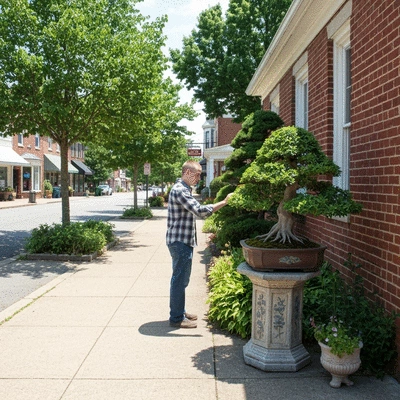
Interactive Features: Engaging Visitors Beyond Visual Appeal
To elevate your bonsai exhibit, think beyond static displays! Interactive features can transform a passive experience into an engaging one. For example, consider setting up:
- QR codes linked to videos demonstrating bonsai techniques.
- Feedback stations where visitors can share their thoughts or ask questions.
- Photo opportunities with specific bonsai that help create memorable keepsakes.
These elements not only enhance the experience but also invite visitors to engage actively with the exhibit. This engagement could spark a lifelong interest in bonsai cultivation!
Utilizing Signage and Marketing Materials to Enhance Visitor Experience
Effective signage plays a vital role in guiding visitors through your exhibit. As I've learned at Shire Bonsai, clear and informative signage can make a world of difference. Ensure that you include:
- Descriptive plaques for each bonsai, detailing its history and care.
- Maps of the exhibit layout to help visitors navigate.
- Engaging brochures that outline bonsai basics and your upcoming events.
By providing comprehensive marketing materials, you not only inform but also inspire your visitors to take the next steps in their bonsai journey. Remember, your exhibit is not just about showcasing trees; it's about cultivating a community of bonsai enthusiasts!
Embracing Cultural Context in Bonsai Exhibits
Understanding the cultural context of bonsai is essential for creating a rich and meaningful exhibit. Bonsai has deep roots in Japanese tradition, but it also spans various cultures worldwide. By exploring these different contexts, you can give visitors a well-rounded perspective on this art form.
At Shire Bonsai, we celebrate the diverse influences on bonsai through our resources, and I encourage you to do the same in your exhibits! Learn more about the rich history in our post on The History of Bonsai.
Exploring Japanese Exhibit Traditions and Techniques
Japanese bonsai exhibits often emphasize simplicity and natural beauty. They focus on the harmony between the tree, its pot, and the overall display. When crafting your exhibit, consider:
- Incorporating traditional Japanese elements, such as stones and moss.
- Using natural materials for display tables that echo the Japanese aesthetic.
- Presenting bonsai in a way that reflects the beauty of nature, rather than imposing artificiality.
By honoring these traditions, you’ll create an exhibit that resonates deeply with visitors and pays homage to the rich heritage of bonsai.
Comparing Global Approaches: Insights from Western and Other Cultures
It's equally important to understand how bonsai is perceived and styled in different cultures. For instance, Western bonsai often embraces bolder styles and diverse influences. By showcasing these differences, you can broaden visitors’ perspectives:
- Highlight various styling techniques from around the globe.
- Include cultural artifacts or presentations that explain different approaches.
- Encourage conversations about how bonsai influences local gardening practices.
Such comparisons invite visitors to appreciate the beauty of diversity in bonsai cultivation. Together, these insights can encourage a more global appreciation for this unique art form!
Community Involvement and Networking Among Bonsai Societies
Finally, fostering community involvement is essential in creating a vibrant bonsai culture. At Shire Bonsai, I regularly participate in local bonsai society events and exhibitions, and I encourage you to do the same! Think about:
- Collaborating with local bonsai clubs to host joint events or workshops.
- Creating a space for local artists or bonsai experts to share their knowledge.
- Encouraging networking opportunities among enthusiasts to strengthen the community. For tips on connecting with other enthusiasts, read our article on Bonsai Shows, Exhibitions, and Events.
By involving the community, you not not only enhance your exhibit but also help to build lasting connections among bonsai lovers!
Recap of Key Points
Here is a quick recap of the important points discussed in the article:
- Quality of Trees: Ensure your bonsai is healthy and well-cared-for.
- Presentation: Arrange and style each tree to highlight its unique features.
- Engaging Visitors: Use educational elements and interactive displays to enhance visitor experience.
- Judges’ Impressions: Showcase aesthetics, health, and craftsmanship to impress judges.
- Incorporate Variety: Display different bonsai styles to showcase versatility and cultural significance.
- Community Involvement: Collaborate with local bonsai societies to foster connections and enhance the bonsai culture.
